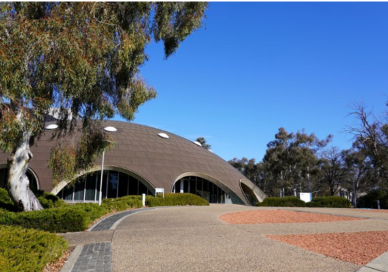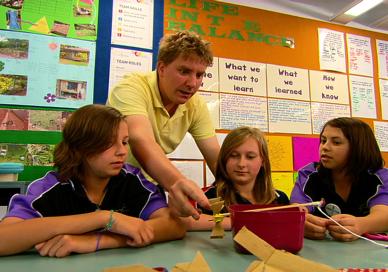For over 20 years, the 5E model of guided inquiry has been the pedagogical heart of Primary Connections’ teaching resources.
Underpinned by research by Roger Bybee et al. and the Biological Sciences Curriculum Study, the 5E model was at the forefront of developments in science education when Primary Connections teaching resources were first conceptualised in 2003.
But time, and educational research, marches on…
As we began to consider how we might re-design our resources to suit the needs of today’s teachers we again consulted the latest research around excellence in science education. This included:
- BSCS Anchored Inquiry Learning model
- International Baccalaureate (IB) Primary Years Program
- Stanford graduate School of Education Design thinking process, and the Pedagogy for Powerful learning
- OpenSciEd curriculum approach
- Australian Research Council's Science of Learning Research centre
The result? Our new Launch, Inquire, Act (LIA) Framework builds on the strong foundations of the 5E model, while drawing on contemporary educational research and the Australian Curriculum's general capabilities including Critical and Creative Thinking, Intercultural Understanding, Ethical Understanding and Personal and Social Capability.
The LIA Framework aims to tap into students’ interests and ideas about their local and global world. This uniquely Australian approach integrates the three Science Strands of the Australian Curriculum V9 (Science understanding, Science as a human endeavour and Science inquiry) seamlessly across its teaching sequences.
The purpose of the Engage phase is echoed in our new Launch phase, which is designed to:
- capture student interest and spark curiosity.
- elicit their prior understanding.
- set learning in a meaningful context.
The purpose of the Explore, Explain and Elaborate phases have been captured in the Inquire phase, as each cycle becomes increasingly robust, supporting students to:
- experience the phenomenon first-hand.
- pose questions for inquiry.
- investigate to answer these questions and solve problems.
- construct multi-model texts to support the development and representation of their understanding.
The purpose of the Elaborate and Evaluate phases are echoed in the Act phase, as students:
- apply their learning in new contexts relevant to today’s world.
- communicate and evaluate their learning.
- reflect on their learning.
Like the 5E model, the LIA framework is designed so that teachers and students can identify each phase and routine of the learning process. Teachers are supported by professional learning and encouraged to modify their teaching approach to suit the context of their students and classroom.


